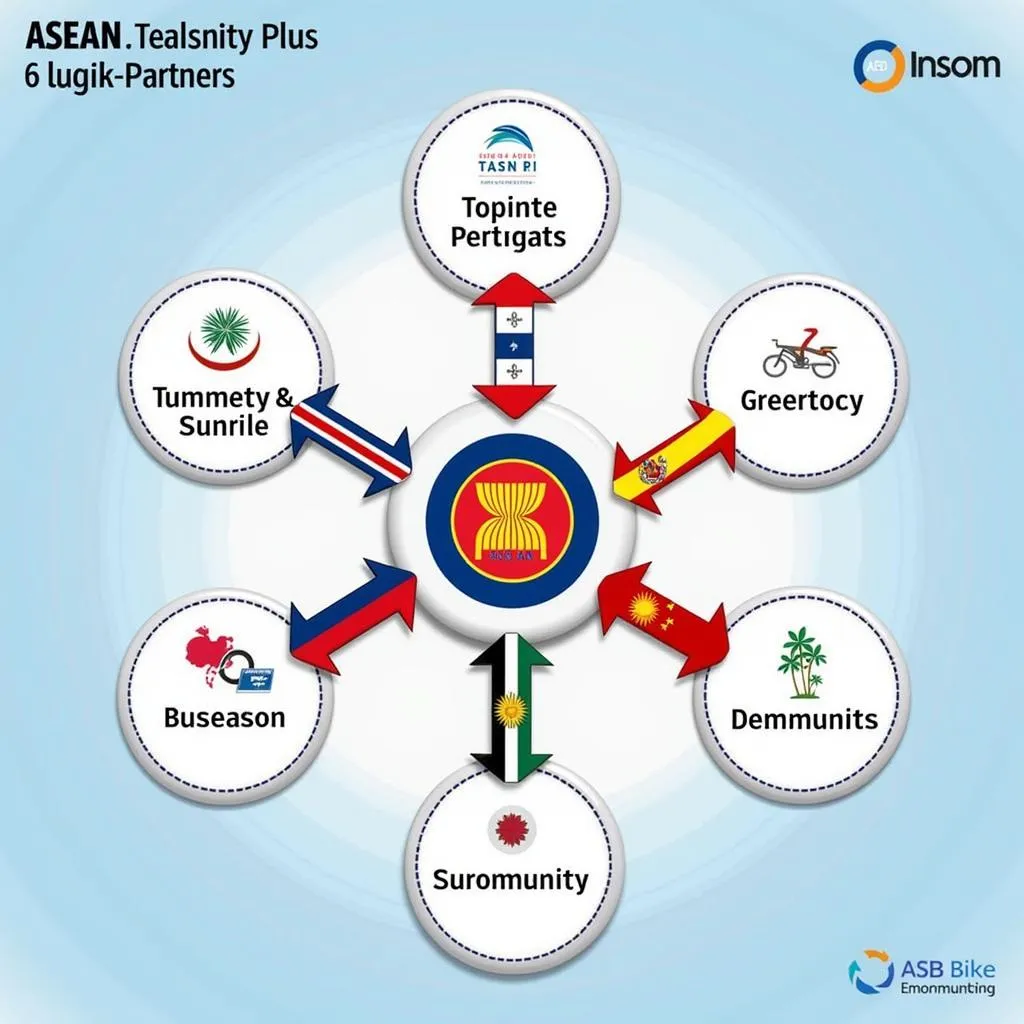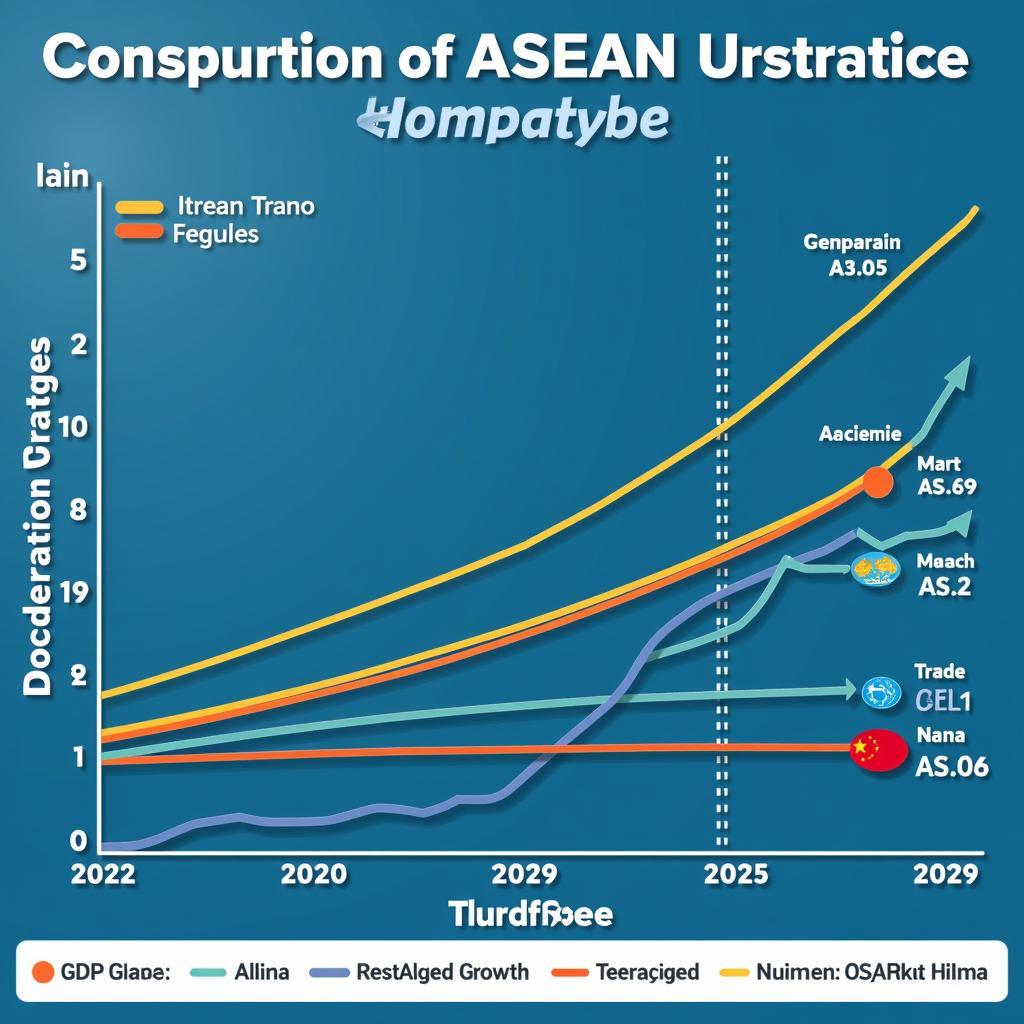The term “Asean 10 Plus 6” signifies a broader framework of economic and strategic collaboration within the Asia-Pacific region. While ASEAN, the Association of Southeast Asian Nations, comprises 10 member states, the “Plus 6” refers to six dialogue partners: China, Japan, South Korea, India, Australia, and New Zealand. This expanded partnership underscores ASEAN’s pivotal role in fostering regional stability and economic integration.
 ASEAN 10 Plus 6 Summit
ASEAN 10 Plus 6 Summit
Delving Deeper into ASEAN 10 Plus 6
The ASEAN 10 Plus 6 mechanism emerged as a response to the growing economic interdependence and geopolitical complexities within the Asia-Pacific. By engaging with key regional players, ASEAN aims to:
- Promote economic cooperation: This encompasses trade liberalization, investment facilitation, and the development of regional economic corridors.
- Enhance political and security dialogue: The platform provides a forum for addressing common security challenges, such as maritime security, terrorism, and cybercrime.
- Foster cultural and people-to-people exchanges: Through educational programs, cultural festivals, and tourism initiatives, ASEAN 10 Plus 6 fosters greater understanding and appreciation among its diverse populations.
 Trade Data Visualization for ASEAN Plus 6 Countries
Trade Data Visualization for ASEAN Plus 6 Countries
Key Areas of Cooperation within ASEAN 10 Plus 6
The ASEAN 10 Plus 6 framework addresses a wide range of thematic areas, including:
- Trade and Investment: Initiatives like the Regional Comprehensive Economic Partnership (RCEP) exemplify efforts to create a free trade area encompassing all 16 countries.
- Connectivity: Infrastructure development, digital connectivity, and transport linkages are crucial for seamless economic integration and people-to-people contact.
- Energy Security: Cooperation in renewable energy, energy efficiency, and energy market integration ensures sustainable development.
- Food Security: Joint efforts focus on improving agricultural productivity, ensuring food safety standards, and promoting sustainable agricultural practices.
“Collaboration within the ASEAN 10 Plus 6 framework is not just about economic gains; it’s about building trust, addressing shared challenges, and creating a more prosperous and secure future for all,” notes Dr. Maya Kumar, a leading expert on Southeast Asian geopolitics.
The Significance of ASEAN Centrality
The concept of “ASEAN Centrality” is paramount within the ASEAN 10 Plus 6 mechanism. This principle underscores ASEAN’s leadership role in shaping the regional architecture.
- Driving the Agenda: ASEAN takes the lead in setting the agenda for dialogue and cooperation, ensuring that the interests of all member states are represented.
- Consensus-Based Approach: Decisions within ASEAN 10 Plus 6 are reached through consensus, fostering a spirit of inclusivity and mutual respect.
- Open Regionalism: While strengthening intra-regional ties, ASEAN 10 Plus 6 remains open to collaboration with external partners.
 Visual Representation of ASEAN Centrality
Visual Representation of ASEAN Centrality
Looking Ahead: Challenges and Opportunities
The ASEAN 10 Plus 6 mechanism holds immense potential but also faces challenges:
- Geopolitical Tensions: Managing differences and promoting dialogue among countries with varying political systems and strategic interests requires adept diplomacy.
- Implementation Gaps: Translating agreements into concrete action and ensuring effective implementation across diverse national contexts remain crucial tasks.
- Inclusiveness and Equity: Addressing development gaps within ASEAN and ensuring equitable distribution of benefits from cooperation are ongoing endeavors.
By fostering open dialogue, strengthening institutional mechanisms, and prioritizing people-centric initiatives, ASEAN 10 Plus 6 can navigate these complexities and realize its full potential.
Conclusion
ASEAN 10 Plus 6 represents a bold vision for regional cooperation in the Asia-Pacific. By leveraging their collective strengths and addressing common challenges, ASEAN and its dialogue partners can pave the way for a more integrated, prosperous, and secure future for the region.
FAQs About ASEAN 10 Plus 6
1. What is the main goal of ASEAN 10 Plus 6?
The primary goal is to enhance regional cooperation across various sectors, including trade, investment, security, and cultural exchange, among ASEAN and its six dialogue partners.
2. Which countries are part of the “Plus 6”?
The “Plus 6” comprises China, Japan, South Korea, India, Australia, and New Zealand.
3. Why is ASEAN centrality important in this framework?
ASEAN centrality ensures that ASEAN leads the dialogue, sets the agenda, and ensures a consensus-based approach, safeguarding the interests of all member states.
4. What are some of the key challenges faced by ASEAN 10 Plus 6?
Challenges include managing geopolitical tensions, bridging implementation gaps, and ensuring inclusiveness and equitable benefits for all participants.
5. What is the future outlook for ASEAN 10 Plus 6?
The future remains promising, contingent upon continued commitment to dialogue, strengthened institutional mechanisms, and a focus on people-centric initiatives.
Need More Information?
For any inquiries regarding ASE Management IP or Army Map ASEs Sale, please don’t hesitate to reach out. Contact us at:
- Phone: 0369020373
- Email: aseanmediadirectory@gmail.com
- Address: Thon Ngoc Lien, Hiep Hoa, Bac Giang, Vietnam
Our dedicated customer support team is available 24/7 to assist you.

